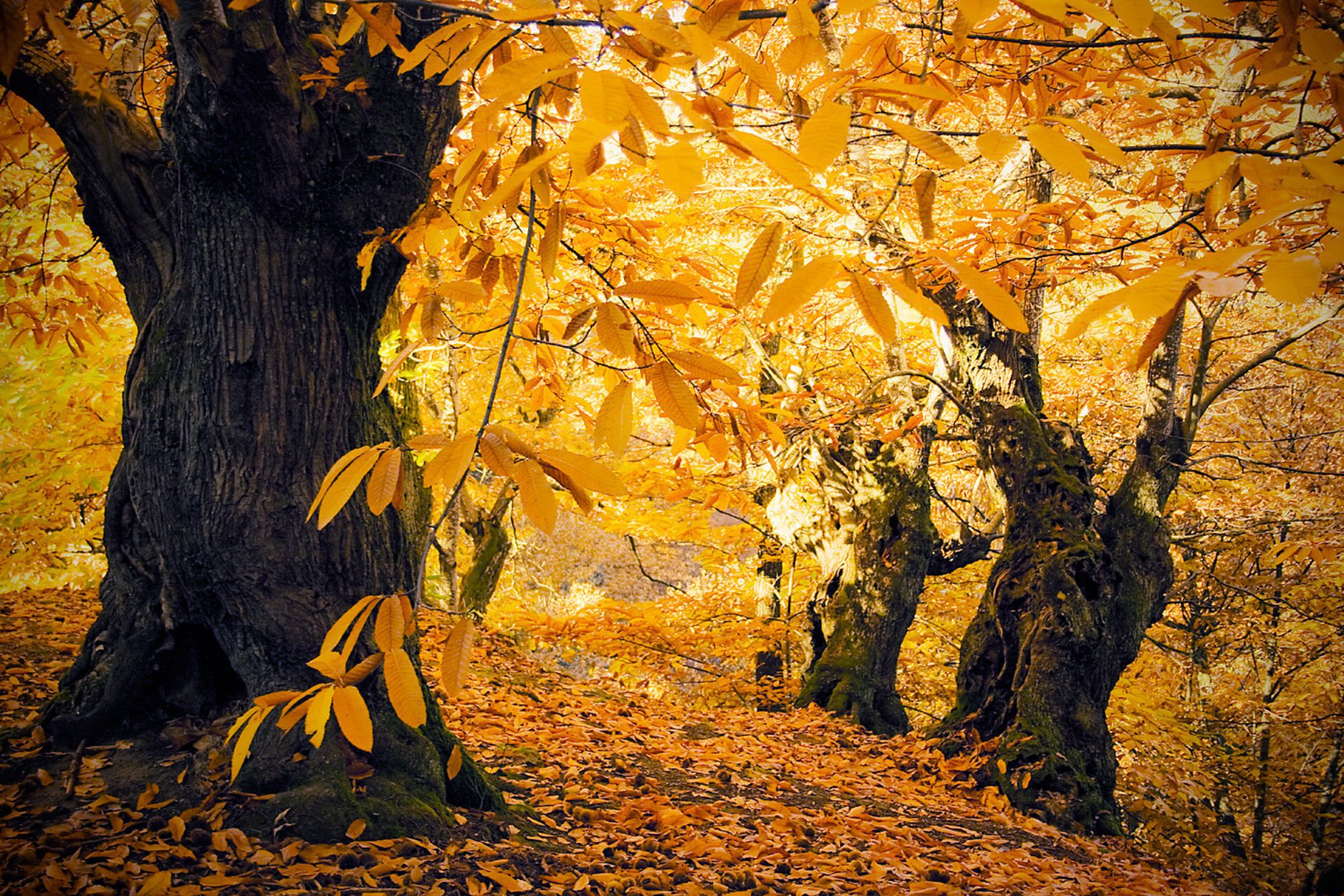Venue & Accommodation
We welcome you to our country, to our city, to share your knowledge and your willingness of contributing to this Symposium focused on one of the loveliest tree species, chestnut.
We plan to celebrate the Symposium in the Auditorium of the Higher Polytechnic Engineering School (https://www.usc.gal/en/center/higher-polytechnic-engineering-school) at Universidade de Santiago de Compostela, Campus de Lugo.
Higher Polytechnic Engineering School/Escuela Politécnica Superior (EPS)
Pabellón III / Pavilion III
C/ Benigno Ledo
Lugo
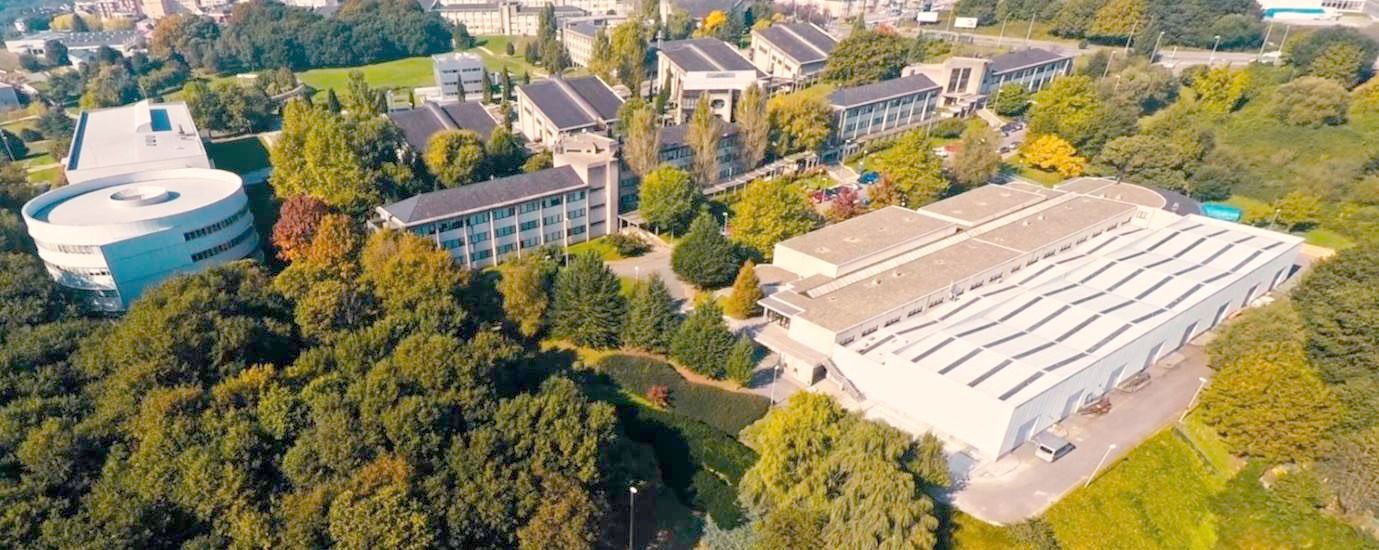
Attendants to this meeting will find chestnut trees in Lugo and other areas from Galicia, descendants from survivors from the last glaciation, selected during years and years by the growers to improve nut and timber production. Those selections are our present cultivars, which are the basis of the Geographic Protected Indication “Castaña de Galicia”. Some of those cultivars are still found in the resilient giant trees, some of them up to 15 m of perimeter, which gives us an idea of how old the tradition of this crop in Galicia is so as the quality of the cultivars selected at that time. Chestnut tree is also part of our landscape and culture.
We know that growers planted chestnuts to produce nuts as staple food before the introduction of the potato and maize from the New World. Chestnut trees were also planted in the surroundings of the vineyards, which were needed for producing poles resistant to humidity to elevate the trunks and the branches from the ground. Moreover, timber was used profusely in the structure of the houses, furniture, and fences.
LUGO
CITY TOURIST INFORMATION
Located on a hill on the banks of the river Miño, the city of Lugo preserves major remains of its Roman past, among them its ancient wall, declared a World Heritage Site by UNESCO.

Inside the walls, the city conserves quiet pedestrian streets, wide squares, and spacious gardens, where buildings such as the Cathedral, the Archiepiscopal Palace, and the City Hall stand out. But the historic quarter also houses some of the best restaurants in Galicia, where it is possible to sample the excellent fresh meats and fish which have earned Lugo's gastronomy recognized acclaim.
Lugo, located in the interior of the province on the banks of the river Miño, is the Galician provincial capital in which the most significant traces of Roman civilization remain. The greatest example of the city's Roman legacy is its wall. It was built between the 3rd and 4th centuries AD in what was known at the time as Lucus Augusti. This stone construction has managed to survive the passage of the centuries and continues to be the city's most distinctive architectural feature, marking the boundary between the historic quarter and the newer area of urban expansion. The uniqueness of this ancient fortress and its good condition mean it is the only Roman wall declared a World Heritage Site.
A good way of seeing the city is precisely by standing atop this imposing construction, some 10 metres high, and strolling along the 2,266 metres of its perimeter. From this position it is possible to admire the historic quarter sheltering below the walls.
The city
Any one of the wall's ten gates gives access to an urban network of quiet pedestrian streets flanked by sober granite buildings. Some of the most emblematic of these are the Carmen gateway, more commonly known as Porta Miñá, which was traditionally used by the pilgrims heading for Santiago de Compostela; the Nova gate, San Pedro gate or the Santiago gate, built in the 18th century and which provides direct access to the Cathedral of Lugo.
The squares of Santo Domingo and España are two chief points in the centre. In the latter stands the magnificent baroque façade of the City Hall, which dates from 1738, and the adjoining clock tower, from the 19th century, although the original building was erected by Pedro de Artiaga in the 16th century. Next to the City Hall, sharing the limelight in this landscaped square are the most elegant cafés in the city, as well as sumptuous buildings such as the modernist Arts Circle.

Another monumental construction in the historic quarter of Lugo is the Cathedral, a Romanesque-Gothic temple which began to be built in the 12thcentury and whose work went on for more than a century, with subsequent additions of great beauty such as the Neoclassic façade, known as the Santiago gate. The structure maintains original Romanesque traces in the central transept and most of the main nave, as well as in the wings. Elements such as the ambulatory, the main chapel and the north portico belong to the Gothic style, while the sacristy, the cloister or the chapel of the Virgen de los Ojos Grandes are baroque. Prominent inside is the rich choir carved in walnut, from the 17th century, as well as the reredos dedicated to the patron of the city, considered one of the crowning works of the Galician baroque style.
In the same square as the Cathedral premises, another renowned building completes this eclectic architectural collection, the Episcopal Palace. This baroque building dates from the 18th century and stands on the site of the old tower of the Counts of Lemos.
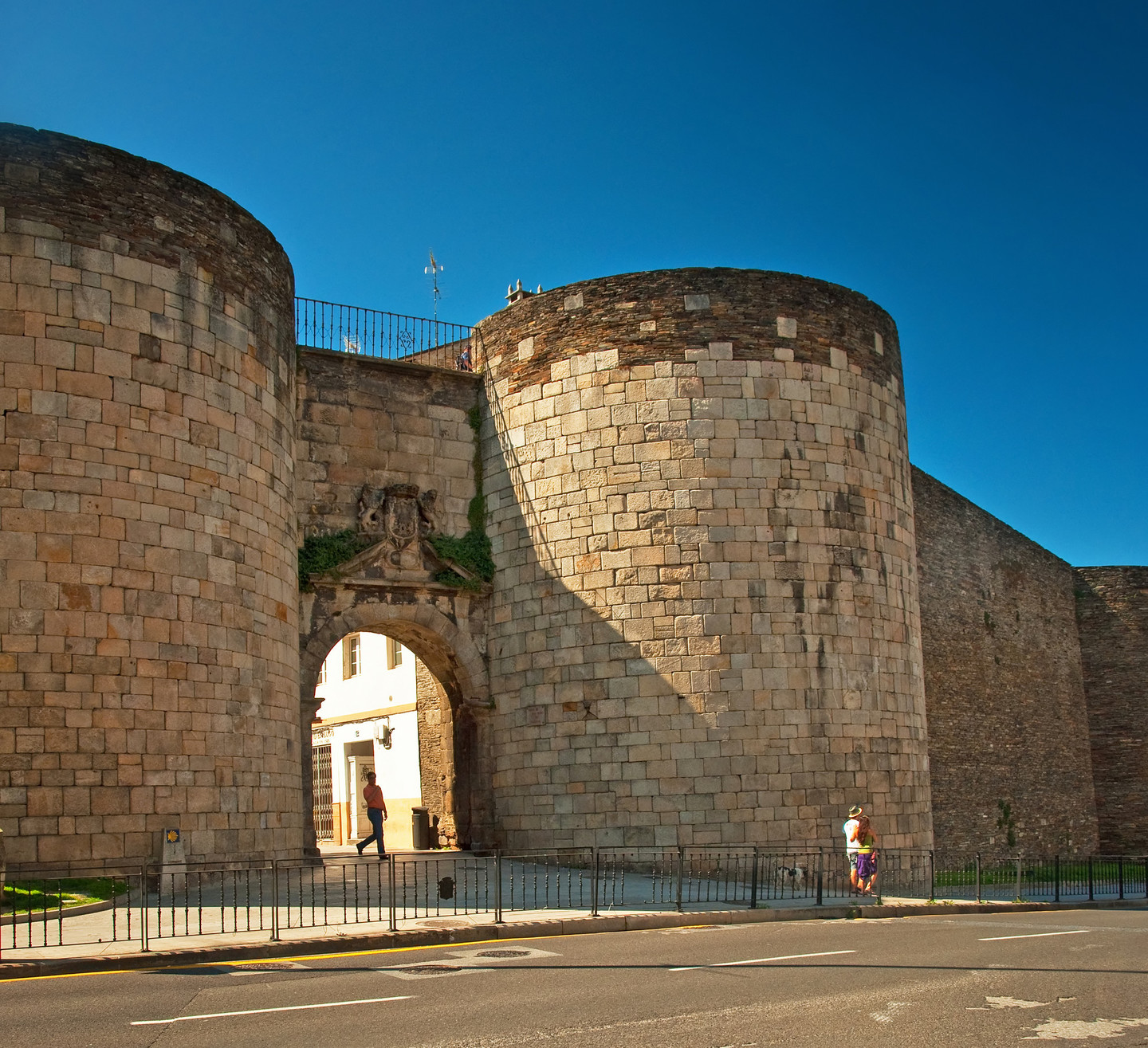
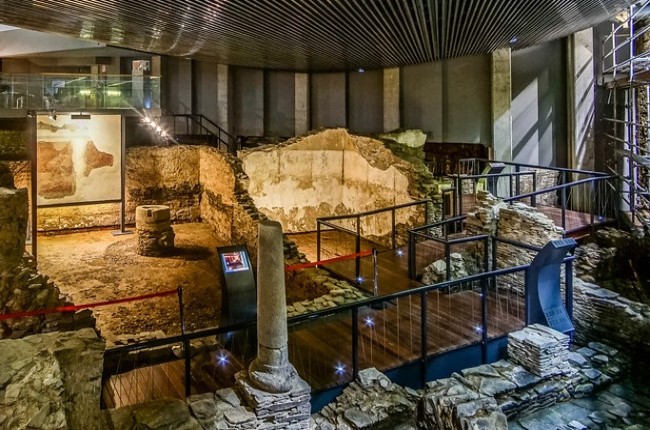
A number of busy shopping streets are spread around the arcaded Praza do Campo, which in former times was the Roman forum and a medieval market. Very close by is the church of San Pedro, a beautiful example of medieval architecture which belonged to what was the convent of San Francisco, today occupied by the facilities of the Regional Museum, one of the most important in the province of Lugo. On the ground floor there are still some areas surviving from the former convent building, such as the Gothic cloister from the 15th century, the refectory and the kitchen, both from the 18th century. The museum's valuable collection contains an extensive exhibition of archaeological pieces, outstanding among which is a collection of pre-Roman precious metalwork, industrial crafts, and sculpture. It also houses an art gallery which gathers works from the 15th century until the present day, with a special section devoted to Galician painters.
The narrow-cobbled lanes of Rúa da Cruz, Rúa Nova and adjacent streets form a genuine tapas route with stops in the many traditional bars and taverns which invite you in to enjoy the generous appetizers which accompany each drink. But this is only the start. “And to eat, Lugo”. So reads the famous motto of the city, whose historic quarter also houses some of the capital's best restaurants. In them, you can sample the best of Lugo's gastronomy: red meats, lacón con grelos (pork with a typical local vegetable), tetilla cheeses and a wide variety of fresh fish and seafood. Any of these specialities can be accompanied by the excellent wines which are produced in the south of the province, protected by the Ribeira Sacra Designation of Origin standard. Outside the walls, the city spreads out in a radius from the wall ringroad, which circles the old town. It is the starting point of important roads such as the shopping-friendly avenue of A Coruña and there are spacious green areas such as Rosalía de Castro Park which, with its lake and woods, is an ideal place to stroll and rest. The park has a varied number of tree species, as well as a sculpture of the Galician writer. From the park's viewing point, you get a panoramic take on the Miño valley, where the Lugo spa is located, famous for its thermal waters. Declared a Site of Cultural Interest, the thermal springs were first used by the Romans, who discovered several therapeutic properties in the waters.
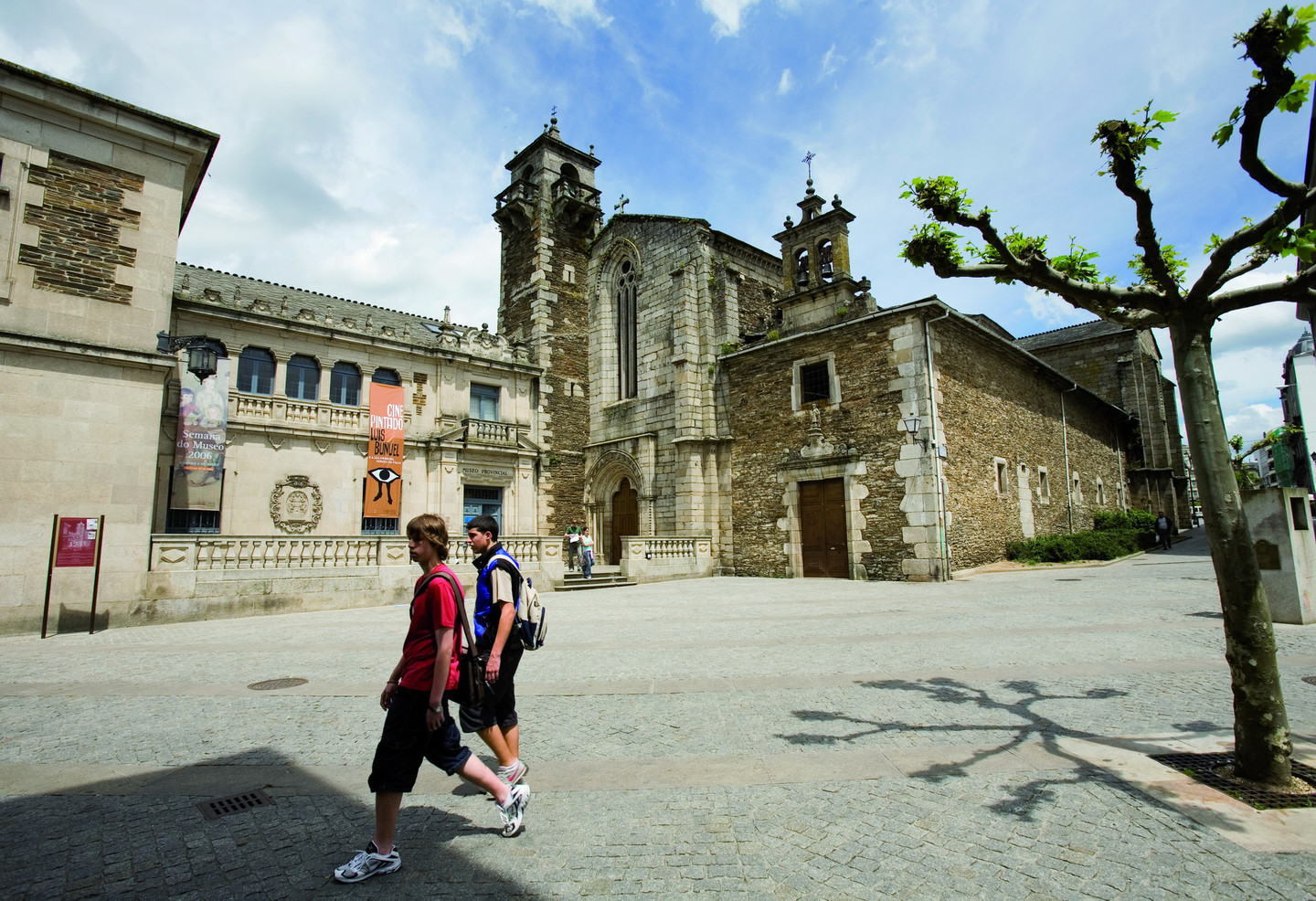
Surrounding area
A few kilometres from Lugo is Santa Eulalia de Bóveda, a Historic-Artistic Site of great archaeological and artistic value which dates from the 4th-7th centuries AD and whose original purpose is unknown. Declared a National Monument in 1931, the building is half-buried and has three naves separated by columns, with an apse at the end. Outstanding inside is the rich sculptural decoration and fine collection of late Roman mural paintings which depict vegetable, geometric and representational motifs.You can also visit Vilalba, a town located on the northern route of the Pilgrim's Route to Santiago de Compostela. As well as a local Museum of Prehistory and Archaeology, it conserves the octagonal tower of the castle of the Andrade, converted into a Parador de Turismo. In Viladonga, some 25 kilometres from Lugo, is one of the most well-preserved castros (old Iberian-Roman hillforts) in Galicia.
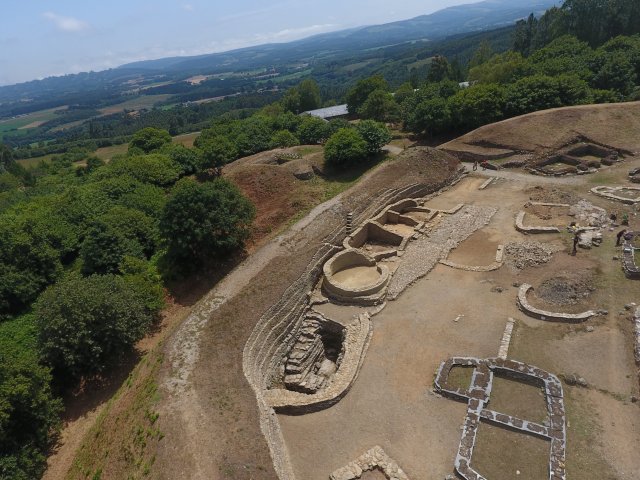
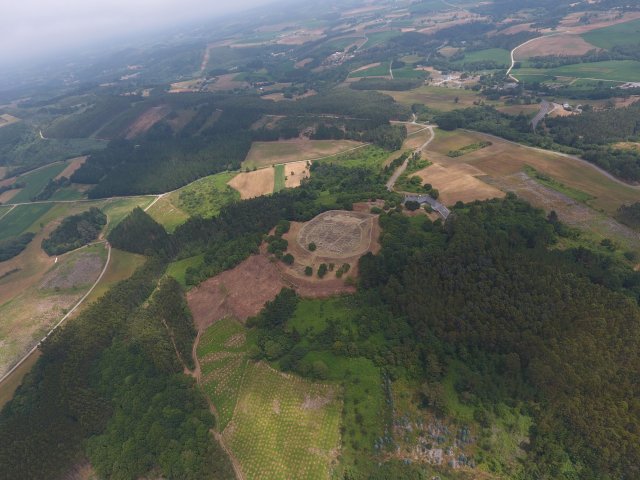
In the north of the province is the Lugo coast, with beautiful seaside towns such as Viveiro, Foz and Ribadeo. Viveiro, the most important city in the region of A Mariña, is located on the estuary of the same name, where the river Landro meets the sea. This busy fishing town preserves three gates from its old medieval wall, the most prominent of which is the Porta do Castelo. In its streets it is possible to see the collection of buildings formed by the church and the convent of San Francisco, declared a Historic-Artistic Site. Next along is Foz, a major tourist enclave which has beautiful beaches. Standing very near this town is the Celtic hillfort of Fazouro and Sargadelos can also be visited, a town famous for its outstanding production of contemporary Galician ceramics. Lastly, the coast reaches the estuary of Ribadeo, separated from Asturias by the river Eo. The natural landscape provides panoramic views such as that of As Catedrais, one of the most unique and biggest beaches on the Galician coast.
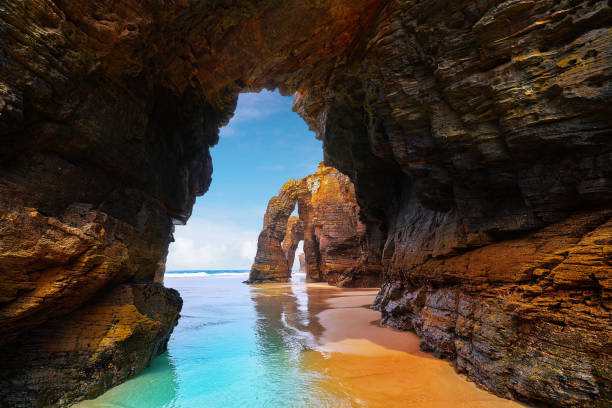
In the south, the provinces of Lugo and Ourense are separated by the canyon of the river Sil. The region is known as Ribeira Sacra, because of the large number of monasteries and hermitages established in the Middle Ages. Monks and growers transformed the area in the past by planting vineyards (heroic viticulture) and chestnut trees which provide an astonishing landscape.
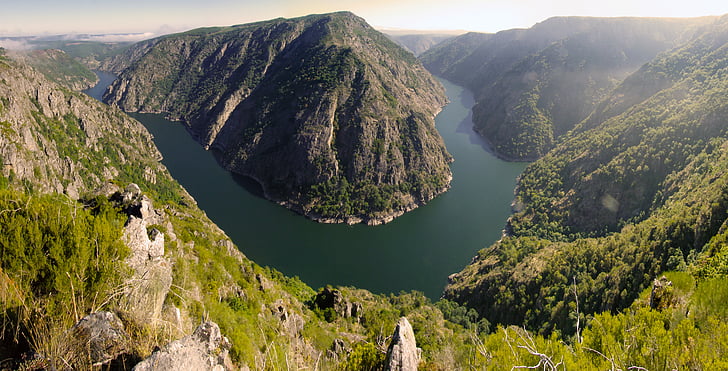
Links:
HOW CAN YOU TRAVEL TO LUGO?
By plane:
The main international airport in Spain is Adolfo Suarez Madrid Barajas https://www.aena.es/es/adolfo-suarez-madrid-barajas.html with connections worldwide. From Madrid airport https://www.alsa.es/aeropuertos/madrid-barajas you can take a direct bus to Lugo www.alsa.es. If you travel by train, you can take the subway (www.metromadrid.es/es) to Chamartín train station www.renfe.es.
You can also fly to Santiago de Compostela airport (SCQ) https://www.aena.es/es/santiago-rosalia-de-castro.html connected with Madrid airport and some other main cities in Spain and Europe, from where you can find direct buses to Lugo www.monbus.es.
Another option is A Coruña airport https://www.aena.es/es/a-coruna.html from where you have to take a bus the A Coruña bus station to take the bus to Lugo www.arriva.es and www.alsa.es
Finally, if you fly to Porto airport https://www.aeroportoporto.pt/es/opo/home, from where you can take a bus to Vigo
https://www.autna.com/wp-content/uploads/dlm_uploads/2022/12/Horarios-Bus-Autna-Diciembre-2022.pdf and from Vigo to Lugo www.monbus.es.
By train:
please, visit www.renfe.es
You have connections from Madrid (Chamartín train station) directly to Lugo. Chamartín train station in Madrid is connected with Atocha train station (where depart and arrive high speed trains for eastern and southern Spanish cities) by underground (if you buy the combined ticket, you have for free the commuter train connecting both train stations).
By bus:
main services are provided by www.alsa.es, www.monbus.es, www.arriva.es
By car:
Lugo is connected by the A6 highway with Madrid (5 h) and A Coruña (1h); with Santiago de Compostela (1,20 h) by the A54 (part of it under construction).
ACCOMODATION
HOTELS CITY CENTER
Hotel Pazo de Orbán
Travesía do Miño, 6, 27001 Lugo, España
https://www.pazodeorban.es/
https://www.booking.com/hotel/es/monumento-pazo-de-orban.es.html
SPECIAL OFFER
_______________________________________________
Hotel Méndez Núñez
Rua da Raiña, 1, 27001 Lugo, España
https://hotelmendeznunez.com/en/
_______________________________________________
Eurostars Gran Hotel Lugo
Avenida Ramón Ferreiro, 21, 27002 Lugo, España
https://www.eurostarshotels.co.uk/eurostars-gran-hotel-lugo.html
Exe Puerta de San Pedro
Rio Neira, 29, 27002 Lugo, España
https://www.eurostarshotels.co.uk/exe-puerta-de-san-pedro.html
SPECIAL OFFER
_______________________________________________
Mercure Lugo Centro
Calle Marina Española, nº29
CP 27002 Lugo, España
https://all.accor.com/hotel/B344/index.en.shtml
_______________________________________________
HOTELS PERIPHERY
Hotel Forum Ceao
Rúa dos Canteiros, S/N,
Polígono do Ceao 27003 Lugo
http://forumceao.com/
Hotel Torre de Núñez
Carretera Nacional VI, km 497, 27160 Lugo, España
https://www.hoteltorredenunez.com/en/
APARTMENTS
Bed & Center
77 Rúa Nova 77, 1A, 27001 Lugo, Spain
https://www.booking.com/hotel/es/bed-and-center.en.html?aid=313249&no_rooms=1&group_adults=2
Lugo 360
Plaza Mayor, 19, 27001 Lugo, Spain
https://www.booking.com/hotel/es/lugo-360.en.html?aid=313249&no_rooms=1&group_adults=2
La mesa del cocinero
Plaza de la libertad 10-12, 27002 Lugo, Spain
https://www.booking.com/hotel/es/la-mesa-del-cocinero.en.html?aid=313249&no_rooms=1&group_adults=2
Apartamento Centro Frente Muralla
Ronda da Muralla 9 - 2E, 27001 Lugo, Spain
https://www.booking.com/hotel/es/apartamento-centro-frente-muralla.en.html?aid=313249&no_rooms=1&group_adults=2
Apartamento de Sonia I
Avenida de A Coruña 32, 27003 Lugo, Spain
https://www.booking.com/hotel/es/apartamento-centro-frente-muralla.en.html?aid=313249&no_rooms=1&group_adults=2
Galerías 16 Viviendas Turísticas
Rúa da Cruz 16, 27001 Lugo, Spain
https://www.booking.com/hotel/es/rua-da-cruz-16.en.html?aid=313249&no_rooms=1&group_adults=2
Apartamentos Porta Nova
Rúa Camiño Real nº 3 edificio, 27004 Lugo, Spain
https://www.booking.com/hotel/es/apartamentos-porta-nova.en.html?aid=313249&no_rooms=1&group_adults=2
Bajo las estrellas
20 Rua Concepción Arenal, 27004 Lugo, Spain
https://www.booking.com/hotel/es/bajo-las-estrella-lugo.en.html?aid=313249&no_rooms=1&group_adults=2
Galerías 16 Viviendas Turísticas
Rúa da Cruz 16, 27001 Lugo, Spain
https://www.booking.com/hotel/es/rua-da-cruz-16.en.html?aid=313249&no_rooms=1&group_adults=2
A palleira de Lola
Conturiz
Sto André de castro, Nº 11
27160 Lugo, España
https://palleiradelola.com/
Apartamentos Turísticos Ciudad de Lugo
Carril das Hortas, 29
CP 27002
Lugo, España
http://www.ciudaddelugo.com/en/
GUESTHOUSES AND HOSTELS
Hostel Cross
Rúa da Cruz, 14
27001 Lugo, España
https://www.hostelcross.com/localizacion.html
Hostel Portón
Rúa Falcón 5, 27001 Lugo, España
https://www.hostelporton.com/
Roots & Boots Lugo
Rúa Santiago, 214, 27004 Lugo
https://www.hotelesfinder.com/roots-boots-lugo/
OTHER OPTIONS
Accomodation offer_Hotel Mercure Lugo Centro.pdf
